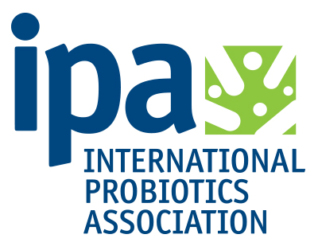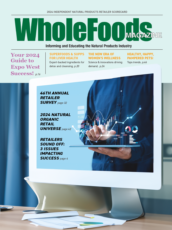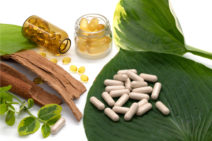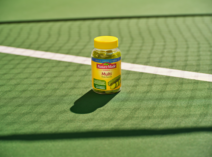
Quicklinks
WholeFoods Magazine
Acute Kidney Injury: A Role for Prebiotics & Probiotics?
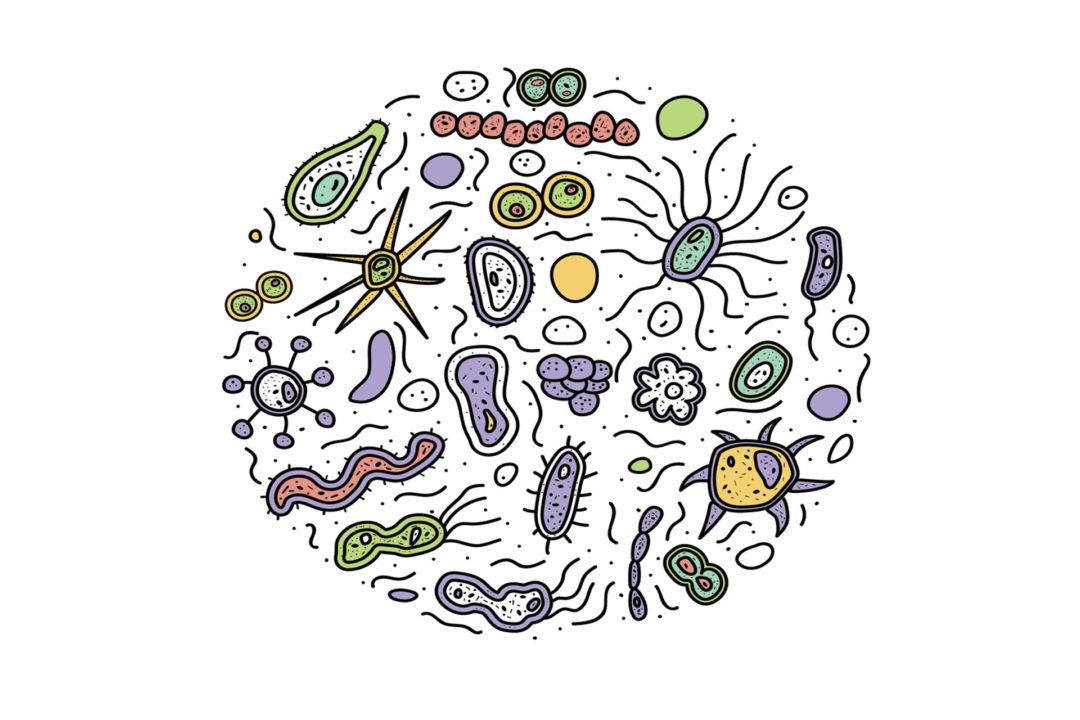
In acute kidney injury (AKI), the kidneys suddenly fail and are no longer able to sustain their vital functions. This is a serious life-threatening emergency, but is generally considered treatable and reversible, often without long-term consequences in individuals with no other comorbidities.
AKI typically occurs in patients living with chronic kidney disease (CKD) due to the accumulation of kidney damage over a long period, or in previously healthy individuals after a hospitalization for general surgeries or admission to intensive care units due to a trauma or for a critical illness.
While AKI is not always predictable, the progression of CKD may be slowed using drugs, diet, and dialysis until the end stage which requires organ transplant. The gut microbiome was shown to influence CKD progression, and more recently AKI severity, which is discussed here. While the link between the microbiota and the kidney was mainly studied in the context of CKD, recent evidence also highlighted a link between AKI and the gut microbiota.
With a lot left to understand, new research is exploring the mechanisms and potential benefits for probiotics, prebiotics and synbiotics in the management of AKI.
AKI involves multiple and overlapping immunological, inflammatory, biochemical, and hemodynamic mechanisms.
The gut microbiota is involved. This diagram shows how gut dysbiosis can influence AKI.
One mechanism by which gut microbiota may modulate inflammation in AKI is through the secretion of short chain fatty acids (SCFAs) such as acetate, propionate, and butyrate. SCFAs—anaerobic fermentation end products of complex carbohydrates—are energy sources and are involved in inflammation.
The kidney has four receptors (GPR41, GPR43, Oflr78, and GPR109a) for SCFAs. These receptors in response to SCFAs—insufficiently generated due to dysbiosis—are integral to kidney function.
A number of findings suggest a beneficial effect of SCFAs in AKI. In one study, SCFAs reduced kidney injury by modulating the inflammatory response, apoptosis and autophagy in AKI induced mice.
Dysbiotic changes in the gut during sepsis can initiate and propagate septic AKI, which in turn can cause further gut injury, setting up a dangerous cycle.
Uremic substances accumulate in AKI. Indoxyl sulfate (IS), p-cresyl sulfate (p-CS), and trimethylamine-N-oxide (TMAO) are uremic substances derived from gut microbiota.
The gut microbiota affects not only the levels of certain uremic toxins but both adaptive and innate immune responses. Damage from AKI leading to leaky gut allows other inflammatory toxins to circulate.
Studies on synbiotics and fecal microbiota transplant in AKI are lacking.
Targeting the gut microbiota may result in better AKI outcomes. Probiotics and prebiotics could potentially treat dysbiosis during AKI and increase disposal of harmful metabolites. Small interventional studies in animal models and in humans show promising results.
Andrianova, Nadezda V et al. “Microbiome-Metabolome Signature of Acute Kidney Injury.” Metabolites vol. 10,4 142. 4 Apr. 2020, doi:10.3390/metabo10040142
Devlin, A Sloan et al. “Modulation of a Circulating Uremic Solute via Rational Genetic Manipulation of the Gut Microbiota.” Cell host & microbe vol. 20,6 (2016): 709-715. doi:10.1016/j.chom.2016.10.021
Gong, Jing et al. “Gut Microbiota-Kidney Cross-Talk in Acute Kidney Injury.” Seminars in nephrology vol. 39,1 (2019): 107-116. doi:10.1016/j.semnephrol.2018.10.009
Hu, Jingjuan et al. “Enteric dysbiosis-linked gut barrier disruption triggers early renal injury induced by chronic high salt feeding in mice.” Experimental & molecular medicine vol. 49,8 e370. 25 Aug. 2017, doi:10.1038/emm.2017.122
Jang, Hye Ryoun et al. “Early exposure to germs modifies kidney damage and inflammation after experimental ischemia-reperfusion injury.” American journal of physiology. Renal physiology vol. 297,5 (2009): F1457-65. doi:10.1152/ajprenal.90769.2008
Kobayashi, Taku et al. “Significance of the Gut Microbiota in Acute Kidney Injury.” Toxins vol. 13,6 369. 22 May. 2021, doi:10.3390/toxins13060369
Lee, Tae-Hee et al. “Lactobacillus salivarius BP121 prevents cisplatininduced acute kidney injury by inhibition of uremic toxins such as indoxyl sulfate and pcresol sulfate via alleviating dysbiosis.” International journal of molecular medicine vol. 45,4 (2020): 1130-1140. doi:10.3892/ijmm.2020.4495
Li, Jiangtao et al. “Gut derived-endotoxin contributes to inflammation in severe ischemic acute kidney injury.” BMC nephrology vol. 20,1 16. 11 Jan. 2019, doi:10.1186/s12882-018-1199-4
Nakade, Yusuke et al. “Gut microbiota-derived D-serine protects against acute kidney injury.” JCI insight vol. 3,20 e97957. 18 Oct. 2018, doi:10.1172/jci.insight.97957
Rabb, Hamid et al. “Inflammation in AKI: Current Understanding, Key Questions, and Knowledge Gaps.” Journal of the American Society of Nephrology : JASN vol. 27,2 (2016): 371-9. doi:10.1681/ASN.2015030261
Rabb, Hamid et al. “The Microbiome and Acute Kidney Injury.” Nephron vol. 140,2 (2018): 120-123. doi:10.1159/000490392
Rydzewska-Rosołowska, Alicja et al. “The Links between Microbiome and Uremic Toxins in Acute Kidney Injury: Beyond Gut Feeling-A Systematic Review.” Toxins vol. 12,12 788. 11 Dec. 2020, doi:10.3390/toxins12120788
Singer, Mervyn et al. “The Third International Consensus Definitions for Sepsis and Septic Shock (Sepsis-3).” JAMA vol. 315,8 (2016): 801-10. doi:10.1001/jama.2016.0287
Wang, Wenji et al. “Serum indoxyl sulfate is associated with mortality in hospital-acquired acute kidney injury: a prospective cohort study.” BMC nephrology vol. 20,1 57. 14 Feb. 2019, doi:10.1186/s12882-019-1238-9
Zhang, Jingxiao et al. “Gut-kidney crosstalk in septic acute kidney injury.” Critical care (London, England) vol. 22,1 117. 3 May. 2018, doi:10.1186/s13054-018-2040-y
Zheng, Di-Wei et al. “An orally delivered microbial cocktail for the removal of nitrogenous metabolic waste in animal models of kidney failure.” Nature biomedical engineering vol. 4,9 (2020): 853-862. doi:10.1038/s41551-020-0582-1
Clare Fleishman RDN, MS is a Registered Dietitian with the Academy of Nutrition and Dietetics and holds a master degree in nutrition science. She bridges the gap between science and health across most platforms: major newspapers, magazines, books (Globesity), workshops, social media and websites. From corporate whiteboards to refugee schools in Egypt, Fleishman agitates for personal and public change. In 2010, she launched www.ProbioticsNow.com to share the cascade of new discovery in the microbiome. Always amazed at this “forgotten organ” Fleishman also creates white papers, blogs, videos and social media for the International Probiotics Association as well as continuing education platforms.
The International Probiotics Association (IPA) is a global non-profit organization bringing together through its membership, the probiotic sector’s stakeholders including but not limited to academia, scientists, health care professionals, consumers, industry and regulators. The IPA’s mission is to promote the safe and efficacious use of probiotics throughout the world. Holding NGO status before Codex Alimentarius, the IPA is also recognized as the unified “Global Voice of Probiotics” around the world.
IPA disclaimer: Probiotics have different characteristics, qualities and actions that are unique to the specific strain or combinations. The label should identify the genus, species and strain for each microorganism in the product (i.e. Lactobacillus acidophilus IPA001). If a claim pertaining to individual strains or a blend of strains contained in the product is made, the manufacturer should maintain evidence that the amount(s) provided in the product is consistent with the scientific evidence in support of the claim.
AKI typically occurs in patients living with chronic kidney disease (CKD) due to the accumulation of kidney damage over a long period, or in previously healthy individuals after a hospitalization for general surgeries or admission to intensive care units due to a trauma or for a critical illness.
While AKI is not always predictable, the progression of CKD may be slowed using drugs, diet, and dialysis until the end stage which requires organ transplant. The gut microbiome was shown to influence CKD progression, and more recently AKI severity, which is discussed here. While the link between the microbiota and the kidney was mainly studied in the context of CKD, recent evidence also highlighted a link between AKI and the gut microbiota.
The Gut-Kidney Axis
The gut-kidney relationship is bi-directional: AKI can cause dysbiosis (changes in structure and composition of the microbiome), while microbiota composition can drive the severity of kidney injury. Data on the existence of a gut-kidney axis and the importance of the microbiome in kidney injury revealed direct crosstalk as well as indirect communication through metabolites such as uremic toxins and short-chain fatty acids. This figure illustrates the gut-kidney axis in AKI.With a lot left to understand, new research is exploring the mechanisms and potential benefits for probiotics, prebiotics and synbiotics in the management of AKI.
Kidneys, Small but Vital
The kidneys are two bean-shaped organs, each the size of a fist, with an outsized workload. Kidneys remove wastes and extra fluids and maintain a healthy balance of water, salts, and minerals—such as sodium, calcium, phosphorus, and potassium—in blood. They also influence other vital organs such as the heart and liver by making hormones that help control blood pressure and by preventing toxins accumulation in the body. Kidneys also make red blood cells and keep bones strong and healthy. Someone can live with only one kidney, from birth or after a nephrectomy, with only minor to no consequences as long as the remaining kidney is healthy.Acute Kidney Injury
Acute kidney injury—also called acute kidney failure—occurs when kidneys rapidly lose filtering ability, leading to dangerous levels of wastes. A multitude of diseases, medications, toxins, infections and accidental injuries can lead to AKI, which can be fatal.AKI involves multiple and overlapping immunological, inflammatory, biochemical, and hemodynamic mechanisms.
The gut microbiota is involved. This diagram shows how gut dysbiosis can influence AKI.
Microbiome and Kidney Interaction
Short Chain Fatty Acids and Inflammation
AKI is associated with inflammation, both locally in the kidney and systemically. Edema and ischemia of the intestinal wall complicating kidney diseases lead to increased intestinal permeability (leaky gut), which further activates the immune system and can lead to systemic inflammation.One mechanism by which gut microbiota may modulate inflammation in AKI is through the secretion of short chain fatty acids (SCFAs) such as acetate, propionate, and butyrate. SCFAs—anaerobic fermentation end products of complex carbohydrates—are energy sources and are involved in inflammation.
The kidney has four receptors (GPR41, GPR43, Oflr78, and GPR109a) for SCFAs. These receptors in response to SCFAs—insufficiently generated due to dysbiosis—are integral to kidney function.
A number of findings suggest a beneficial effect of SCFAs in AKI. In one study, SCFAs reduced kidney injury by modulating the inflammatory response, apoptosis and autophagy in AKI induced mice.
Hypertension
Recent studies have focused on the connection between the microbiome and hypertension, a frequent finding in AKI. In a study with mice, eight weeks of high-salt-feeding resulted in hypertension and renal damage. Fecal transplantation from these mice into normal mice resulted in leaky gut and hypertensive renal damage.Sepsis
Sepsis—life-threatening organ dysfunction caused by a dysregulated host response to infection—is the leading cause of AKI in the intensive care unit.Dysbiotic changes in the gut during sepsis can initiate and propagate septic AKI, which in turn can cause further gut injury, setting up a dangerous cycle.
Amino Acids
Abundant in kidneys of animal models, D-amino acids are metabolites of gut microbiota with distinct functions. One such amino acid, D-serine from intestinal bacteria, showed protective effects in a murine AKI model.Uremic Substances
The gut microbiota generates toxins that are absorbed into the blood and cleared by the kidneys. Dysbiosis can lead to excessive secretion, which can lead to uremia—a buildup of toxins in the blood—which may damage the kidneys.Uremic substances accumulate in AKI. Indoxyl sulfate (IS), p-cresyl sulfate (p-CS), and trimethylamine-N-oxide (TMAO) are uremic substances derived from gut microbiota.
- In an animal study, elevated levels of IS and p-CS in the blood were correlated with the severity of AKI.
- In a study with humans, serum IS levels were significantly elevated in patients with AKI compared to those in healthy subjects and critically ill patients and were associated with a worse prognosis of AKI.
- Limited CKD data suggest that increased TMAO may worsen kidney function during AKI, according to one review.
The gut microbiota affects not only the levels of certain uremic toxins but both adaptive and innate immune responses. Damage from AKI leading to leaky gut allows other inflammatory toxins to circulate.
Potential Interventions
A recent systematic review of both animal and human studies shows that modifying the gut microbiota improves the prognosis of AKI.Probiotics
Probiotics may be useful in AKI in several ways: by altering the gut microbiota composition, restoring mucosal barrier function, and affecting the inflammatory response. A few small studies explored their effect in AKI.- In a study with rats, a strain of Lactobacillus salivarius protected against cisplatin-induced kidney injury by inhibition of uremic toxins such as indoxyl sulfate and pcresol sulfate.
- And in another study in rats, two probiotic formulations protected the kidneys from acetaminophen-induced acute injury and reduced the levels of uric acid in the blood.
- Also, a microbial cocktail of Escherichia, Bacillus, and Enterobacter protected against nephrotoxin-induced AKI in an animal study.
Prebiotics
The role of various prebiotics in CKD has been studied with promising results but a role in AKI is not reported. However, anaerobic fermentation of prebiotics results in the production of short chain fatty acids. Many studies in mice have shown that administration of SCFAs (especially acetate and butyrate) improves outcomes of AKI.Studies on synbiotics and fecal microbiota transplant in AKI are lacking.
Takeaway
The gut microbiota interacts with the kidneys in a bi-directional manner. Dysbiosis can drive severity of acute kidney disease, which in turn disrupts microbiota composition.Targeting the gut microbiota may result in better AKI outcomes. Probiotics and prebiotics could potentially treat dysbiosis during AKI and increase disposal of harmful metabolites. Small interventional studies in animal models and in humans show promising results.
References
Andrade-Oliveira, Vinicius et al. “Gut Bacteria Products Prevent AKI Induced by Ischemia-Reperfusion.” Journal of the American Society of Nephrology : JASN vol. 26,8 (2015): 1877-88. doi:10.1681/ASN.2014030288Andrianova, Nadezda V et al. “Microbiome-Metabolome Signature of Acute Kidney Injury.” Metabolites vol. 10,4 142. 4 Apr. 2020, doi:10.3390/metabo10040142
Devlin, A Sloan et al. “Modulation of a Circulating Uremic Solute via Rational Genetic Manipulation of the Gut Microbiota.” Cell host & microbe vol. 20,6 (2016): 709-715. doi:10.1016/j.chom.2016.10.021
Gong, Jing et al. “Gut Microbiota-Kidney Cross-Talk in Acute Kidney Injury.” Seminars in nephrology vol. 39,1 (2019): 107-116. doi:10.1016/j.semnephrol.2018.10.009
Hu, Jingjuan et al. “Enteric dysbiosis-linked gut barrier disruption triggers early renal injury induced by chronic high salt feeding in mice.” Experimental & molecular medicine vol. 49,8 e370. 25 Aug. 2017, doi:10.1038/emm.2017.122
Jang, Hye Ryoun et al. “Early exposure to germs modifies kidney damage and inflammation after experimental ischemia-reperfusion injury.” American journal of physiology. Renal physiology vol. 297,5 (2009): F1457-65. doi:10.1152/ajprenal.90769.2008
Kobayashi, Taku et al. “Significance of the Gut Microbiota in Acute Kidney Injury.” Toxins vol. 13,6 369. 22 May. 2021, doi:10.3390/toxins13060369
Lee, Tae-Hee et al. “Lactobacillus salivarius BP121 prevents cisplatininduced acute kidney injury by inhibition of uremic toxins such as indoxyl sulfate and pcresol sulfate via alleviating dysbiosis.” International journal of molecular medicine vol. 45,4 (2020): 1130-1140. doi:10.3892/ijmm.2020.4495
Li, Jiangtao et al. “Gut derived-endotoxin contributes to inflammation in severe ischemic acute kidney injury.” BMC nephrology vol. 20,1 16. 11 Jan. 2019, doi:10.1186/s12882-018-1199-4
Nakade, Yusuke et al. “Gut microbiota-derived D-serine protects against acute kidney injury.” JCI insight vol. 3,20 e97957. 18 Oct. 2018, doi:10.1172/jci.insight.97957
Rabb, Hamid et al. “Inflammation in AKI: Current Understanding, Key Questions, and Knowledge Gaps.” Journal of the American Society of Nephrology : JASN vol. 27,2 (2016): 371-9. doi:10.1681/ASN.2015030261
Rabb, Hamid et al. “The Microbiome and Acute Kidney Injury.” Nephron vol. 140,2 (2018): 120-123. doi:10.1159/000490392
Rydzewska-Rosołowska, Alicja et al. “The Links between Microbiome and Uremic Toxins in Acute Kidney Injury: Beyond Gut Feeling-A Systematic Review.” Toxins vol. 12,12 788. 11 Dec. 2020, doi:10.3390/toxins12120788
Singer, Mervyn et al. “The Third International Consensus Definitions for Sepsis and Septic Shock (Sepsis-3).” JAMA vol. 315,8 (2016): 801-10. doi:10.1001/jama.2016.0287
Wang, Wenji et al. “Serum indoxyl sulfate is associated with mortality in hospital-acquired acute kidney injury: a prospective cohort study.” BMC nephrology vol. 20,1 57. 14 Feb. 2019, doi:10.1186/s12882-019-1238-9
Zhang, Jingxiao et al. “Gut-kidney crosstalk in septic acute kidney injury.” Critical care (London, England) vol. 22,1 117. 3 May. 2018, doi:10.1186/s13054-018-2040-y
Zheng, Di-Wei et al. “An orally delivered microbial cocktail for the removal of nitrogenous metabolic waste in animal models of kidney failure.” Nature biomedical engineering vol. 4,9 (2020): 853-862. doi:10.1038/s41551-020-0582-1
Clare Fleishman RDN, MS is a Registered Dietitian with the Academy of Nutrition and Dietetics and holds a master degree in nutrition science. She bridges the gap between science and health across most platforms: major newspapers, magazines, books (Globesity), workshops, social media and websites. From corporate whiteboards to refugee schools in Egypt, Fleishman agitates for personal and public change. In 2010, she launched www.ProbioticsNow.com to share the cascade of new discovery in the microbiome. Always amazed at this “forgotten organ” Fleishman also creates white papers, blogs, videos and social media for the International Probiotics Association as well as continuing education platforms.
The International Probiotics Association (IPA) is a global non-profit organization bringing together through its membership, the probiotic sector’s stakeholders including but not limited to academia, scientists, health care professionals, consumers, industry and regulators. The IPA’s mission is to promote the safe and efficacious use of probiotics throughout the world. Holding NGO status before Codex Alimentarius, the IPA is also recognized as the unified “Global Voice of Probiotics” around the world.
IPA disclaimer: Probiotics have different characteristics, qualities and actions that are unique to the specific strain or combinations. The label should identify the genus, species and strain for each microorganism in the product (i.e. Lactobacillus acidophilus IPA001). If a claim pertaining to individual strains or a blend of strains contained in the product is made, the manufacturer should maintain evidence that the amount(s) provided in the product is consistent with the scientific evidence in support of the claim.

